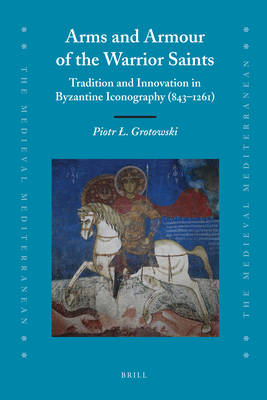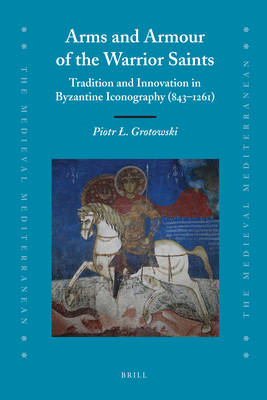
- Afhalen na 1 uur in een winkel met voorraad
- Gratis thuislevering in België vanaf € 30
- Ruim aanbod met 7 miljoen producten
- Afhalen na 1 uur in een winkel met voorraad
- Gratis thuislevering in België vanaf € 30
- Ruim aanbod met 7 miljoen producten
Zoeken
Arms and Armour of the Warrior Saints
Tradition and Innovation in Byzantine Iconography (843-1261)
Piotr Grotowski
€ 450,45
+ 900 punten
Omschrijving
The question of the independence of Byzantine iconography continues to draw attention. Following extensive research on the persistence of Classical motifs in Byzantine art, interest has recently turned to the originality of the latter and its reliability as a historical source. This study examines whether military equipment (armour, weapons, insignia and costume) shown in images of the warrior saints reflects items actually used in the mid-Byzantine Army or merely repeats Classical forms. Such representations are compared with documentary evidence gathered chiefly from Byzantine military manuals. The author demonstrates that military equipment, being a vital branch of material culture subject to constant evolution, provides a good indicator of iconographic innovation in the art of Byzantium.
Specificaties
Betrokkenen
- Auteur(s):
- Uitgeverij:
Inhoud
- Aantal bladzijden:
- 628
- Taal:
- Engels
- Reeks:
- Reeksnummer:
- nr. 87
Eigenschappen
- Productcode (EAN):
- 9789004185487
- Verschijningsdatum:
- 24/09/2010
- Uitvoering:
- Hardcover
- Formaat:
- Genaaid
- Afmetingen:
- 160 mm x 240 mm
- Gewicht:
- 1198 g

Alleen bij Standaard Boekhandel
+ 900 punten op je klantenkaart van Standaard Boekhandel
Beoordelingen
We publiceren alleen reviews die voldoen aan de voorwaarden voor reviews. Bekijk onze voorwaarden voor reviews.








